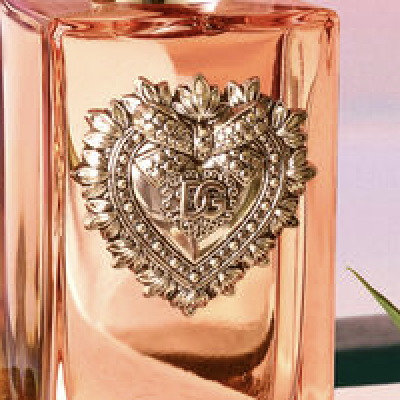Open Notes
By Jo Phillips
The way perfume is made is not necessarily well understood. There has for many years, been much mystery surrounding the process and most of all mysterious ingredients used in the creation of scent. However, the industry is beginning to open up, with one New Zealand-based brand making this part and parcel of their philosophy; which they actually did from day one. Find out more Abel in Open Notes
One very popular ingredient in perfume that now seems to be in SO many modern fragrances is Musk. But what is really meant when you read the word musk in a write up about some new perfume to the market. What is it? what is its history? And why oh why is it everywhere…But most important how does this modern monster of a perfume ingredient do to our environment? Open notes explores this explosive ingredient.

Musks have been part of perfumes for centuries but seem to be back in fashion (never really left). It first appeared in the 6th Century and was utilised in India, Greece all the way to the Middle East, traded on the silk route because all these communities managed to harness the art of capturing its powers. Because after all it is considered the smell of raw sex, it’s carnal and almost it is felt to have massive aphrodisiac properties. So yes of course you want it in a scent.
Traditionally musk was taken from the sex gland secretions of a deer as a byproduct. Being animalistic in nature, it has sensual undertones, a very strong odor, something the animal would have originally used to attract and sexually aroused a mate.

So as expected is smells animalistic, earthy and woody yet it goes all the way to something akin to the odor of baby’s skin all the way to sweaty, wooly, and lightly sweet. There are now of course thousands of synthetic versions available, but what does synthetic musk do to our envoirnment?
In the 1880s, while trying to make a more powerful form of dynamite, a scientist named Albert Baur accidentally synthesized a molecule that ended up smelling a lot like musk. It was used in perfumes until the 1950s when people realized the molecules didn’t degrade and started building up in the environment.
In the 1950s another synthetic was produced a musky compound called nitrated 3-tert butyltoluene. Soon, this nitro musk became the standard musk scent, and it helped form the base of famous perfumes such as Chanel No. 5.
In the mid-20th century, researchers discovered that nitro musks weren’t very good for the environment (and people) either and so researchers endeavored to find a replacement. The second generation of musks began to dominate the market in the 1970s. Of course, these too, were found to harm the environment.
Many musks still in use today are harmful, and some people can’t seem to smell them. They range in smell from sweet, powdery musks to almost metallic versions Abel however, as very much part of their philosophy worked to create a natural musk that didn’t harm the world around us. Founder Frances Shoemack says
“Fossil fuel derived polycyclic musks enter our waterways when we shower and from there, build up in the food chain, particularly in aquatic life. There’s no impetus for fragrance houses to switch to more environmentally friendly options while consumers don’t know what’s in their perfume and when the biodegradable ingredients cost 15 times more.”
Abel Odor, latest fragrance has just been released. Cyan Nori a vibrant electro-pop scent inspired by the ocean expanse contains a distinctive profile sweet, salty and effervescent.
Think juicy tangerine and white peach with a salty deep-sea dry down. Coveted for its moisture enriching amino acid content, the inclusion of Nori (seaweed grown off the coast of France) blurs the line of functional and fragrant in this hyper modern scent.
Frances Shoemack explains
“Imagine that you’re by the ocean and a bolt of sunshine slices through the clouds… this is how I would describe Cyan Nori. Not widely used in perfumery, the quantity of Algae Absolute [Nori] in this fragrance is nothing short of an overdose. It brings the salty seascape feeling into the composition and anchors the vibrant burst of Tangerine in the top notes.”
Instead of a launch party, the Abel community are hitting the South Coast of Wellington (the brand’s new home base) for an “Ocean Clean-up” with Sustainable Coastlines New Zealand – who will also receive 1% of Cyan Nori’s sales as part of Abel’s 1% For The Planet commitment.
At the very core of this brand is a celebration of our natural world and a willingness to follow through by protecting our universe. Musk this wonder ingredient can no longer, of course, be taken from animals; it’s natural source. Finding a plant-based alternative has the real potential to shake up the world of perfume. After all the supreme ingredient is beyond powerful. This story may well give an idea of just how important and enigmatic it really is.
Several years ago a biologist Miguel Ordenana told the Scientific American magazine that he believed jaguars could be lured to camera traps by spraying certain perfumes on a tree branch. So Calvin Klein’s Obsession for men was used. The fragrance contains a pheromone called civetone derived from the scent glands of a cat-like mammal called the civet, which is often used in colognes. During an experiment at New York’s Bronx Zoo, jaguars apparently loved the perfume too.
We want the animalistic raw scent of sex in our perfumes but now we can safely do it without harming animals or our plant.
Cyan Nori is available October 21st at abelodor.com To learn more about Abel’s environmental stance visit their we care page. Available in the UK Here
If you enjoyed reading open notes then why not read about the 10th anniversary of Aventus by Creed Here



